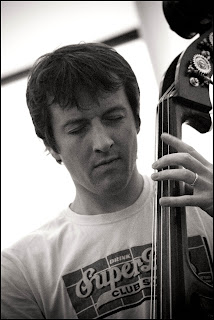
In the years since that time I must have attended hundreds of gigs.
In 1976 I was managing a record shop in the Birmingham Shopping Centre. I was listening to a great deal of music. Birmingham Jazz was just starting up. I remember the then chairman, George West, calling to see me and asking if I wouldn’t mind putting up a poster or perhaps having a few flyers on the counter of the shop. I was delighted to do my bit to promote jazz in Birmingham. I remember attending the first Birmingham Jazz Society gig, Barbara Thompson's Paraphernalia - at the Grand Hotel on Colmore Row (September 26th. 1976). I’m not sure if it was a sell out but remember it being well attended.
In the years since then I’ve enjoyed many great evenings of jazz thanks to Birmingham Jazz.
The Rush Hour Blues concert series has proved to be a fantastic success. The Friday evening gigs draw audiences in the hundreds. For some time now I’ve been recording the event with my camera and the present collection of photographs you see in this exhibition are a small selection of many hundreds of images I’ve made in recent years in an attempt to capture something of the event for posterity. The seeds sown by the purchase of ‘A Pictorial History of Jazz’ all those years ago are represented here – my own grainy tribute to the music I love.
I hope you enjoy my album.
Garry Corbett











































